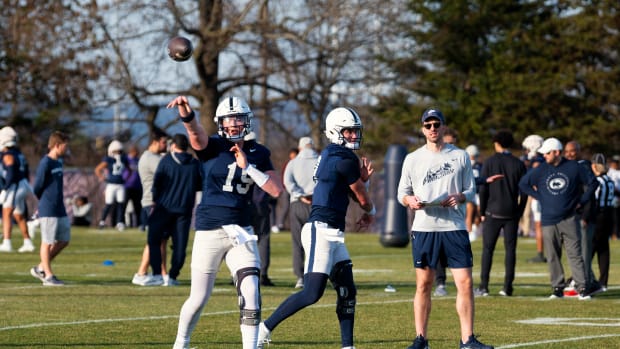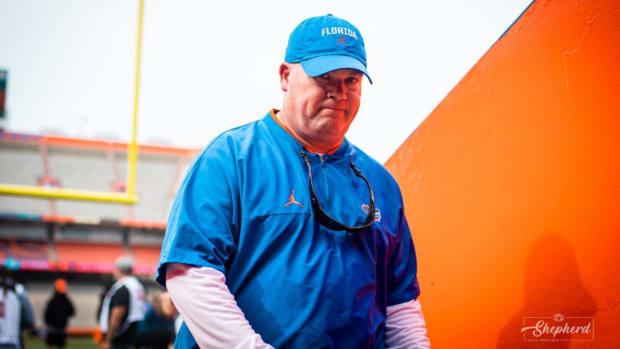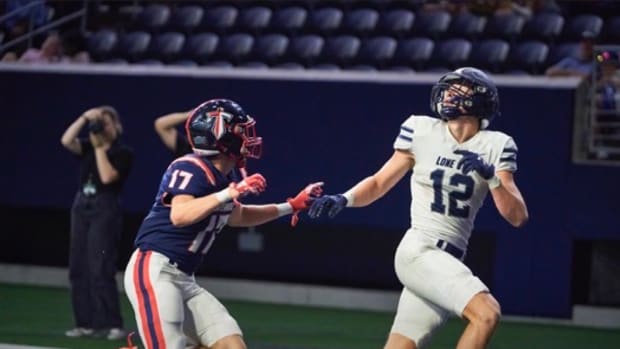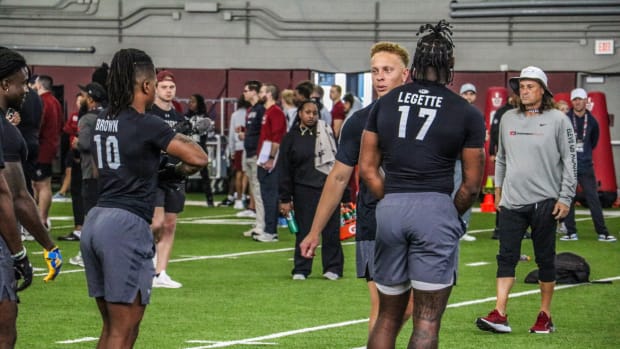Penn State–Auburn a Rare Campus Clash Between Big Ten, SEC
When Auburn runs into a whiteout in State College, Pa., Saturday night, it will mark the first time the Tigers have played in a Big Ten campus football stadium in 90 years. Back then, Auburn took multiple trains to Chicago, practiced at Loyola University, then boarded another train to Madison, Wis. Next day, the Tigers and Badgers tied 7–7 in Camp Randall Stadium.
Ancient history, outdated transport, prehistoric football. And yet, Auburn still has more recent experience traveling into Big Ten country than some of its Southeastern Conference counterparts.
Tennessee has never played an opponent from the U.S.’s oldest conference on the road in the regular season. Arkansas’s last trip to a Big Ten campus was Iowa in 1925.
Auburn’s 1931 voyage is only slightly more ancient than Mississippi’s one journey into the Big Ten, when it played at Minnesota in ’32. Mississippi State hasn’t been up that way since games at Michigan State in ’46 and ’47.
Pretty amazing. But the Big Ten’s reciprocity is even worse.
Since the SEC was formed in 1933, Michigan, Minnesota and Iowa have never played a true road game against a team from that league. Purdue, Illinois, Wisconsin and Ohio State have each played just one, and they’re all dated: the Boilermakers at Vanderbilt in 1942, the Illini at Florida in ’67, the Badgers at LSU in ’72, the Buckeyes at LSU in ’87.
There has been exactly one long-standing series while both schools were members of the two conferences: Kentucky vs. Indiana. They played 36 times, including annually from 1987 through 2005. They were evenly matched, with Indiana leading the series 18-17-1. It was pretty much everything you’d want in a football series, except the teams were rarely very good.
That anomalous arrangement can be attributed to two things: Indiana is the southernmost Big Ten school and Kentucky was (before Missouri coming onboard) the northernmost SEC school, with a distance of just 175 miles between them; they are men’s basketball-centric athletic programs that had a vibrant rivalry in that sport, and it made sense to carry it over to football. (Alas, both those rivalries now are dead.)
Other than the Hoosiers and Wildcats? Close to nothing. Certainly, the primary programs haven’t met unless it was on a neutral field either to start a season or end it.
Somehow, the two most historically powerful conferences in college football have largely avoided each other. The Mason-Dixon line might as well have been the Berlin Wall separating the Big Ten and SEC. Nobody seemed to want to be the first to pick up the phone and schedule the other league. And nobody seems entirely sure why.
“I wish I could give you some wisdom as to why the SEC and Big Ten haven’t played more regular-season games,” says my colleague Tony Barnhart, who has covered college football nationally (and especially in the South) for decades. “To my knowledge there was no plan that caused this to happen.”
There was no plan, but there were expanding conference schedules that probably played a part in it. In 1988, the SEC moved from a six-game league schedule to seven. And then that increased to eight in ’92 with the expansion to 12 teams. The Big Ten went to eight conference games in ’70 and then to its present nine in 2016.
Still, the leagues managed to schedule plenty of other Power 5 teams. Just not each other.
“It’s a shame,” says Ryan Jones, editor of the Penn State alumni magazine, the Penn Stater. “It’s a bummer.”
Another bummer: Just when we have achieved a Big Ten–SEC scheduling breakthrough that starts with this two-game Auburn–Penn State series and extends to other matchups stretching out to 2034, recent events may squash the trend in its tracks. Ohio State has home-and-home series scheduled with Alabama (’27 and ’28) and Georgia (’30 and ’31); Wisconsin is scheduled for a home-and-home with Alabama (’24 and ’25); Nebraska meets up with Tennessee (’26 and ’27); Purdue with Mississippi (’33 and ’34); Minnesota with Mississippi State (’26 and ’27); and Missouri and Illinois have agreed to an eight-game resumption of their old rivalry starting in ’26. But the Big Ten’s nascent alliance with the Pac-12 and Atlantic Coast Conference may scuttle any further scheduling latitude, and possibly lead to the cancellation of some of those series.
As part of the Alliance agreement, the three conferences plan to schedule games against one another in the coming years. The plan calls for each of their teams to play two games, home and away, each season against teams from the other two conferences. That could necessitate a reduction in league games in order to add Alliance games.
Alliance games would be played three per week, spread out over the course of a season. And since everyone in a Power 5 conference wants one or two guaranteed nonconference home games against lesser competition every season, guess what would have to go to make it all work? Matchups like Auburn–Penn State.
Watch NCAA football games online all season long with fuboTV: Start with a 7-day free trial!
At least both programs seem to be embracing this while they have it. Plenty of Auburn fans have made plans to attend, gobbling up already scarce plane tickets and hotel rooms in and around State College. And the Penn State student section started chanting, “We want Auburn” late in the Nittany Lions’ home-opening victory over Ball State last week.
“We want this place rocking,” Penn State coach James Franklin said this week. “I’ve got a ton of respect for Auburn; I’ve got a ton of respect for the SEC. I want these fans and the staff and these coaches to go back to the SEC and say, ‘We love our football in the SEC, but what they do up there at Penn State is special and I don’t know if I’ve ever seen anything like it.’ ”
Auburn players noted this week that they have been to all the SEC hotbeds in the last couple of years—Alabama, LSU, Texas A&M, Georgia, Florida. There isn’t much that the more experienced players on the Tigers’ roster haven’t seen on the road. But if Penn State fills every seat in 106,572-seat Beaver Stadium (the school doesn’t announce sellouts, so that remains unclear), it figures to be the largest crowd Auburn has played in front of since Tennessee put more than 107,000 in Neyland Stadium against the Tigers in 2004. (That stadium’s capacity has since been reduced to 102,000.)
“There’s a real buzz for this game,” Jones says. “Last year, with COVID, felt like a whole season is missing. To have the stadium full and a ranked team coming in has created a buzz. I think Big Ten fans are very mindful of the conference competitiveness and the SEC’s reputation, and there’s a ton of pride in the whiteout.
“I think the Auburn fans who come up here will be impressed, and I think the Penn State fans who go down there next year will be impressed with what they experience.”
There have been too few fall Saturdays for SEC and Big Ten fans to appreciate each other’s fervor. This is a great opportunity to change that, with a few other marquee matchups to come in the years ahead. But long term, the already rare SEC vs. Big Ten campus games could cease to exist altogether.
Sports Illustrated may receive compensation for some links to products and services on this website.





